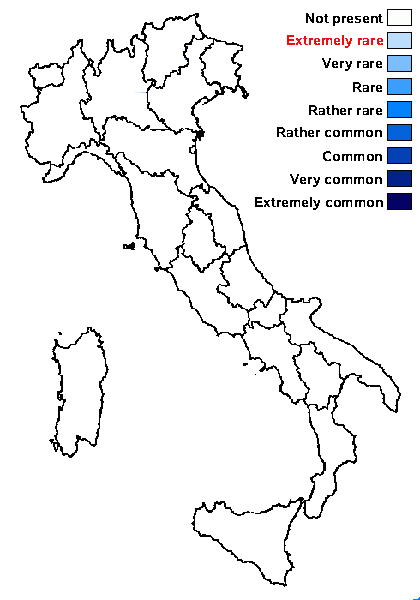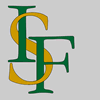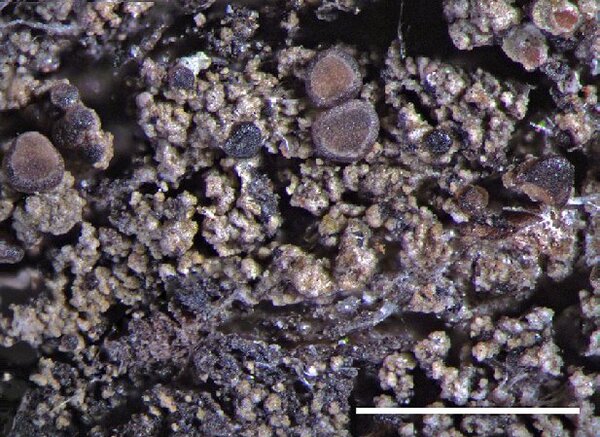Bacidina indigens (Vain.) S. Ekman & J. Gerasimova
in Gerasimova & Ekman, Phytotaxa, 316, 3: 294, 2017. Basionym: Lecidea indigens Vain. - Ark. Bot., 8,. 4: 104, 1909
Synonyms: Bacidia indigens (Vain.) Zahlbr.; Bacidia viridescens auct. non (A. Massal.) Th. Fr.; Scoliciosporum viridescens auct. non (A. Massal.) Rabenh.
Distribution:
Description: Thallus crustose, episubstratic, grey-white, pale bluish grey or pale greenish brown, consisting of 80-120 mm wide granules or warts. Apothecia biatorine, (0.2-)0.4-0.8 mm across, pale brown, grey or black, with a flat to convex disc and an initially distinct, often finally excluded proper margin. Proper exciple paraplectenchymatous, purple-brown in outer and upper parts, K+ intensifying purple, sometimes with a greenish tinge in upper parts, more or less colourless within; epithecium olivaceous green, sometimes brownish in old apothecia, K-; hymenium colourless, 30-55 μm high, less than a third as high as the whole apothecium; paraphyses simple or sparingly branched in upper part, 1.5-2 μm thick at mid-level, the apical cells up to 5 μm wide; hypothecium colourless or pale yellowish brown, K-. Asci 8-spored, clavate to cylindrical-clavate, the apical dome K/I+ dark blue with a pale, conical-pointed apical cushion (axial mass) never penetrating through the entire d-layer, the wall K/I-, but the thin outer gel K/I+ blue, Bacidia-type. Ascospores 3-7-septate, hyaline, needle-like, 25-50(-60) x 1.5-2 μm. Pycnidia rare, immersed, the wall brown, sometimes also patchily greenish, K+ purple. Conidia thread-like, curved, 15-25 x c. 1 μm. Photobiont chlorococcoid, the cells 5-12 μm in diam. Spot tests: thallus K, C-, KC-, P-, UV-. Chemistry: without lichen substances. Note: mostly on more or less calciferous soil (mainly on bryophytes and plant debris). Never recorded from Italy, but quite widespread elsewhere in Europe, e.g. in the British Isles; to be looked for in Italy.
Growth form: Crustose
Substrata: rocks, soil, terricolous mosses, and plant debris
Photobiont: green algae other than Trentepohlia
Reproductive strategy: mainly sexual
Commonnes-rarity: (info)
Alpine belt: absent
Subalpine belt: absent
Oromediterranean belt: absent
Montane belt: absent
Submediterranean belt: absent
Padanian area: absent
Humid submediterranean belt: absent
Humid mediterranean belt: absent
Dry mediterranean belt: absent

Predictive model
Herbarium samples
Growth form: Crustose
Substrata: rocks, soil, terricolous mosses, and plant debris
Photobiont: green algae other than Trentepohlia
Reproductive strategy: mainly sexual
Commonnes-rarity: (info)
Alpine belt: absent
Subalpine belt: absent
Oromediterranean belt: absent
Montane belt: absent
Submediterranean belt: absent
Padanian area: absent
Humid submediterranean belt: absent
Humid mediterranean belt: absent
Dry mediterranean belt: absent

Predictive model
| Herbarium samples |
 Index Fungorum
Index Fungorum
 GBIF
GBIF


